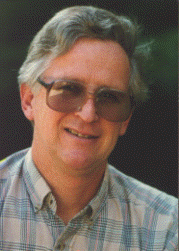Dec. 17, 2009
 As reviewed in the January, 2009 issue of Nature: Methods , the past decade has seen an explosion of fluorescence LM techniques demonstrating spatial resolution significantly beyond the Abbe Limit (HRLM). Are we truly on the verge of nm spatial resolution in living cells? Wonderful though these techniques are, I think that they will only be used in an optimal manner once their various limitations are better understood. Although they have sidestepped the diffraction limit, Poisson statistics still represents a significant barrier. Higher resolution implies smaller pixels and therefore the same (or greater) number of photons must originate from ever-smaller volumes of the specimen. More signal implies more phototoxicity. While no HRLM technique is free from limitations, each has a different suite of problems. It is the aim of this contribution to list and contrast the limitations, with an eye to determining which method is best suited to a particular type of structural investigation.
As reviewed in the January, 2009 issue of Nature: Methods , the past decade has seen an explosion of fluorescence LM techniques demonstrating spatial resolution significantly beyond the Abbe Limit (HRLM). Are we truly on the verge of nm spatial resolution in living cells? Wonderful though these techniques are, I think that they will only be used in an optimal manner once their various limitations are better understood. Although they have sidestepped the diffraction limit, Poisson statistics still represents a significant barrier. Higher resolution implies smaller pixels and therefore the same (or greater) number of photons must originate from ever-smaller volumes of the specimen. More signal implies more phototoxicity. While no HRLM technique is free from limitations, each has a different suite of problems. It is the aim of this contribution to list and contrast the limitations, with an eye to determining which method is best suited to a particular type of structural investigation.
STORM and PALM rely on being able to image individual dye molecules sequentially using widefield fluorescence, to calculate and store the centroid of each diffraction-limited spot, and then to bleach or photodeactivate these molecules before imaging others. As in an earlier image-intensifier system developed for the EM , the final image is built up by summing the centroids from many (~1,000s) EM-CCD images, a process that takes some time. For this approach to work, signal from endogenous fluorophors must be kept very low, a requirement often satisfied by employing TIRF imaging. As a result, PALM and STORM are most suitable for imaging biological structures located very close to the coverslip surface. These imaging techniques also rely on photobleaching or photoswitching, processes that may also produce reactive oxygen species that can diffuse µm before reacting possibly with molecules that are not dyes.
On the other hand, the specimen is never subjected to the extreme energy density present in the STED beam. This high energy density may be the reason that most STED studies employ unfamiliar fluorophors that often emit in the red or near-IR. Despite this, STED can record 3D HRLM images at up to 28fps . Techniques using coherently structured-illumination such as 4Pi, and SIM, employ somewhat lower illumination intensities but they also require that the specimen be sufficiently optically homogeneous to preserve the geometric integrity of the illumination and imaging interference patterns, a condition not always easily met . Saturated widefield techniques, such as SSIM, expose the specimen to very high peak power levels and the low illumination duty cycle implies a data rate too slow for imaging moving specimens.
James Pawley (University of Wisconsin, USA)


